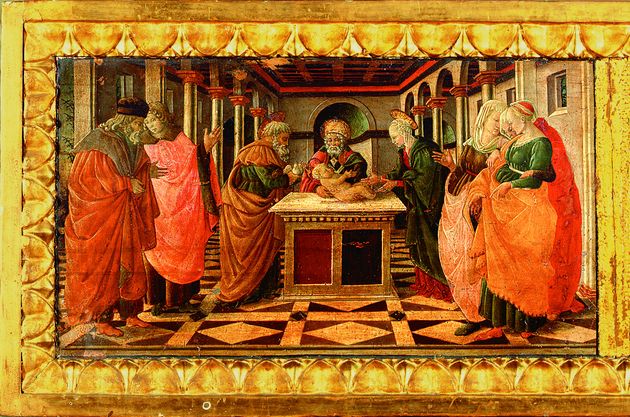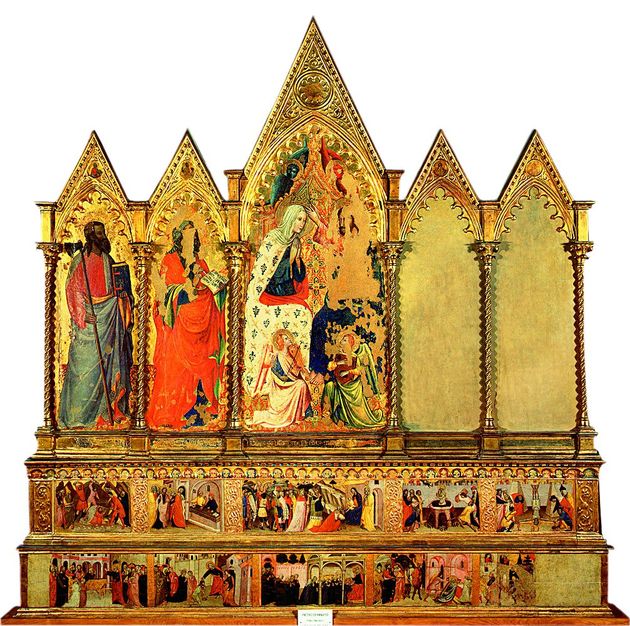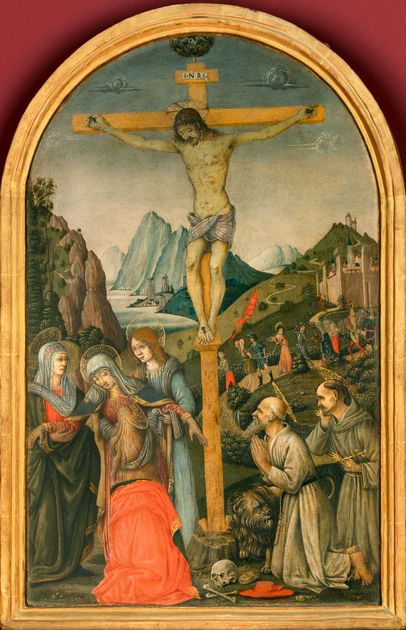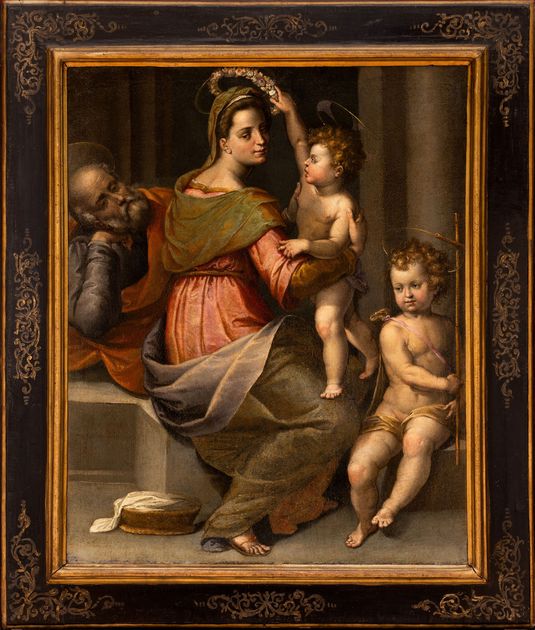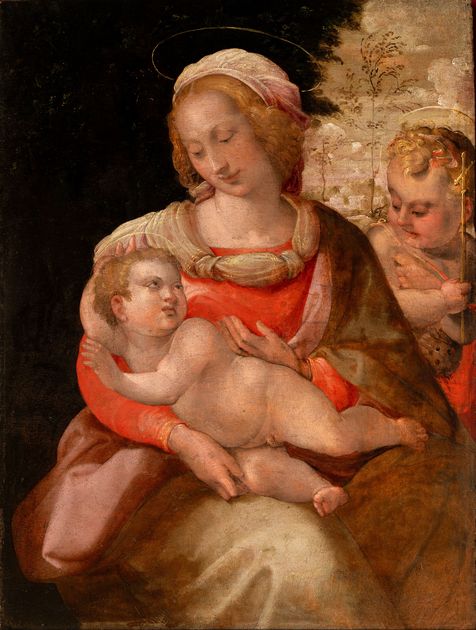With this altarpiece Filippo Lippi creates a commemorative mechanism with a precise hierarchical order: in front of a melancholy Madonna, seated higher up and accompanied by the patron saints of Prato and Florence (Sts. Stephen and John the Baptist), we find Francesco Datini with his characteristic red robe, in the position of “admired deceased”. He is smaller than the holy figures, but not as small as the four administrators, who are hopeful of being recommended to the Virgin by their illustrious mentor.
Although the painted surface of this panel was greatly damaged (it was exposed to the elements outside up to the end of the 19th century), after careful restoration it has been possible to recover sections with an extremely inventive style; note for example the widespread splendour of the gold background and the relief effects on the cloak fabrics, elegant and severe at the same time in accordance with Flemish dictates. The work also contains the minute but precious portraits “from the life” of the four small worshippers, whose false modesty, an exquisitely Renaissance quality, has not prevented them from occupying an area of admirable realistic beauty in the painting.
Other artworks by Filippo Lippi on display in this same hall are the Madonna of the Belt, the Nativity and the Annunciation.










